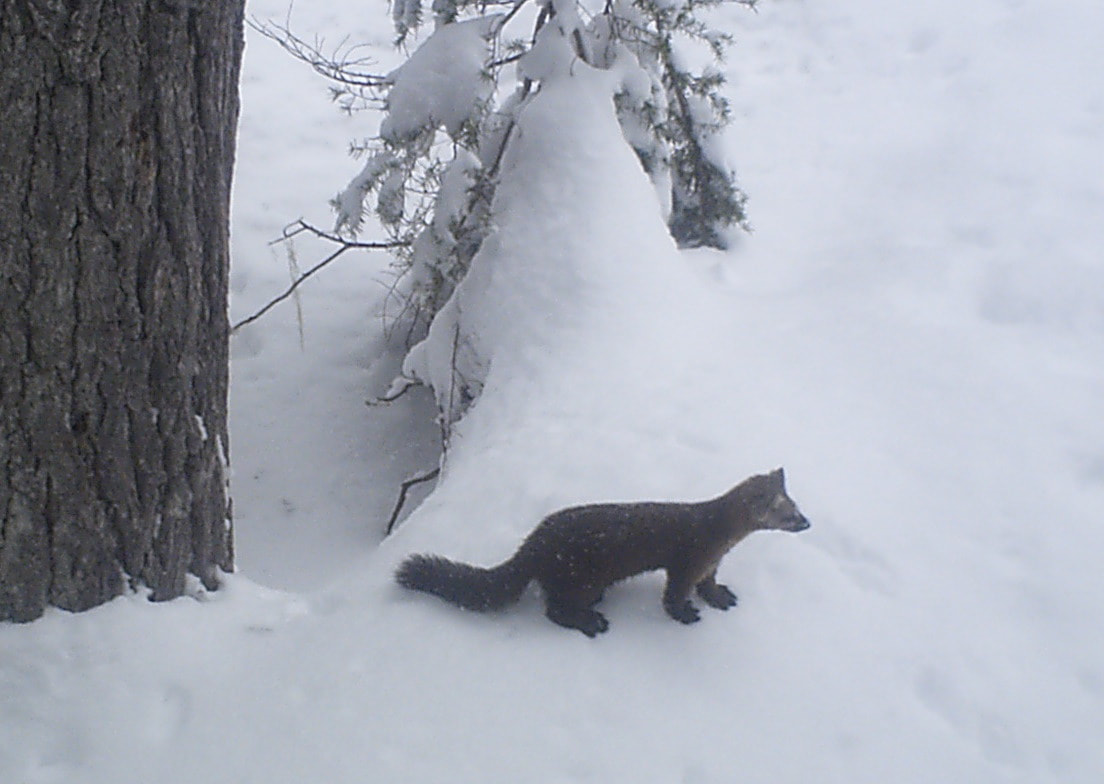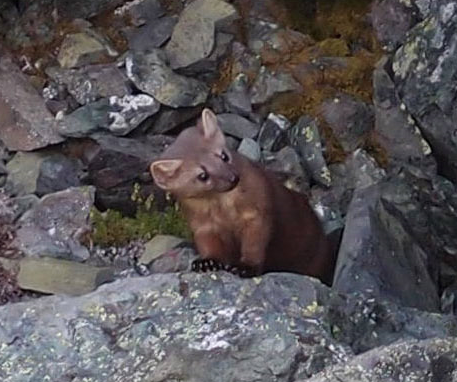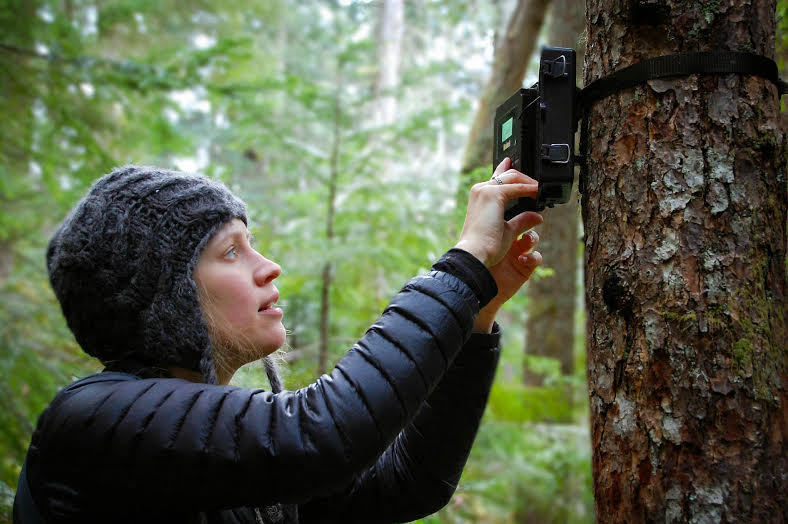Adventure Scientists’ data collection in 2013 and 2014 “was crucial in conducting the Olympic National Forest’s winter marten surveys,” said our project partner, Betsy Howell, “and [the subsequent seasons] would not have been such a success without your efforts.”
We caught up with Betsy to hear more about the project’s past, present, and future.
The surveys AS did in 2013 and 2014 helped support our theory that we still needed to get higher in elevation if we were going to find martens. With funds obtained after these two winters we were able to hire crews that then focused at higher elevations in the national park and forest. These stations, however, were only out for a few weeks, so the next steps after those were to install the overwinter cameras with long-acting lure dispensers that stayed on the landscape for a year. These then resulted in a number of detections during the 2018-2019 survey season. The work AS did was part of the ongoing evolution of our understanding of current marten occurrence in the Olympic Mountains.
Do you have a favorite memory from working with Adventure Scientists?
The night before our first survey day in 2013 I couldn’t sleep! I was nervous and excited and NPR was showing up that day too, so there was a lot going on. Our marten survey efforts up to this point had been more ad hoc, so this felt amazing to me, that we suddenly had so many people so interested in the work and capable of doing the work also. It was pretty thrilling!
I didn’t feel that surprised honestly, but of course I had been hopeful that we’d get lucky. I also felt good however. The second best thing to actually documenting martens was to have a good program, with camera stations that were functional on the landscape because this would show that the effort was solid. And because the effort was solid and the data were of good quality, then we could be fairly sure we just weren’t looking in the right areas, ie. high enough in elevation. Negative results are important too as long as the surveys are done well.
How did you feel when the first one was spotted subsequently?
Great, of course! In June 2015, we got two photographs, one from a remote camera set out for fisher monitoring and one from a rock climber. These were the first records since 2008 and we were all super excited.
What do you love most about martens after all this time?
It’s hard (impossible, I might say) to not be enchanted by martens and their adorable faces and scrappy natures. But they’re more than just pretty faces in the forest. They’re also critical to the health of forests, as well as indicators of the great changes that are taking place currently in the forest environment.
What are your hopes for the future of martens on the Olympic Peninsula?
The hope is that we will be able to take the investigations to a higher level with more intense surveys in the areas we’ve found martens to better understand their population distribution and connection, as well as population status (by looking at genetics). Understanding these aspects will inform future management actions. The goal, of course, is to have healthy, sustaining populations of martens in the Olympics.
Want to learn more about martens? Check out our project film and more.
Be a part of the next great update by joining one of our current projects today!



